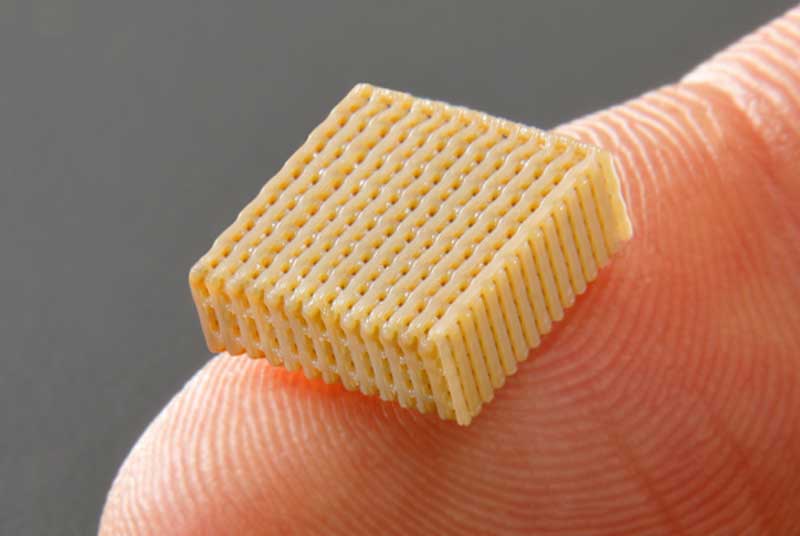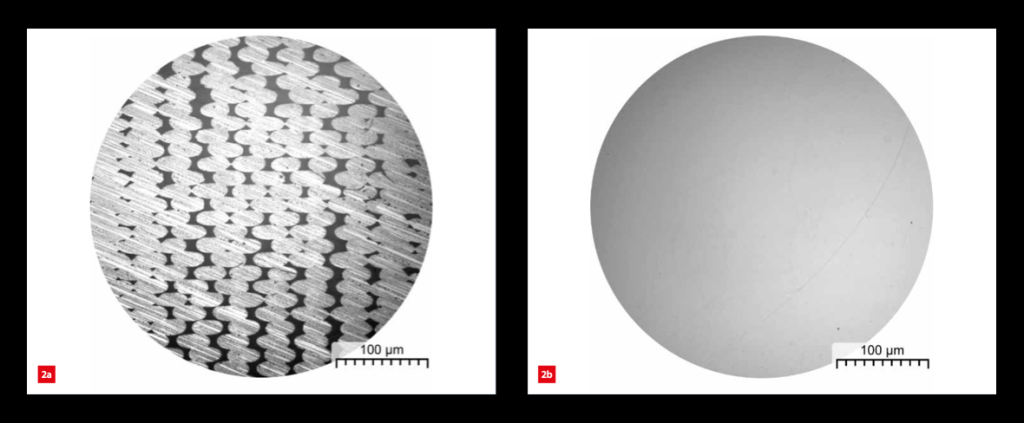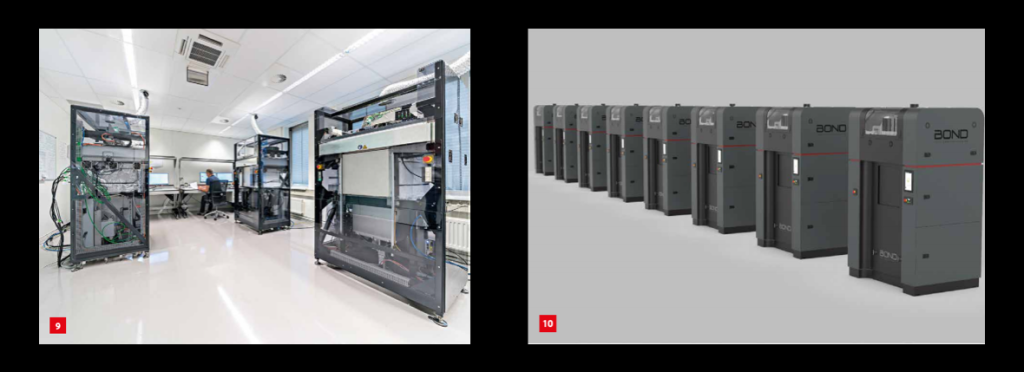Last week at Formnext 2021, Dutch 3D printing startup Bond3D showcased its void-free 3D printing technology for the world to see.
Founded back in 2014, the company claims to be the first in the industry capable of 3D printing functional end-use parts with high-performance polymers such as PEEK without losing the inherent properties of the material.
Unlike conventional FFF, Bond3D’s patented technology is a pressure-controlled extrusion process, whereby the printed filament reportedly settles in final part densities of above 99%. The resulting isotropic parts retain the bulk properties of their base materials, much like those produced via injection molding.

The problem with 3D printing PEEK
PEEK is one of the better-known thermoplastics in the PAEK (polyaryletherketone) family of high-performance polymers. Combining high strength and biocompatibility with chemical resistance and excellent thermal stability, the jack-of-all-trades material has applications in almost every critical industry.
Unfortunately, PEEK is notoriously difficult to 3D print while retaining its mechanical properties. Due to the circular shape of conventional printing nozzles, neighboring layers of extruded PEEK tend to have limited contact areas between them. This results in voids being formed within the parts, meaning 3D printed PEEK components always have a lower density than their bulk material counterparts.
According to Bond3D, conventional PEEK 3D printers are usually only capable of achieving around 85% part density, leading to reduced strength in the z-direction.

Void-free 3D printing with Bond3D
Bond3D’s technology claims to address this issue, but how does it work? In essence, the pressure-controlled printing process aims to extrude material until all of the voids between the previously printed lines are filled. The system ensures material flow continues until the pressure in the melt pool directly below the nozzle exceeds a certain threshold – this is derived from the upward force exerted on the nozzle itself. Once the threshold is crossed, the previous layers have been completely bonded and no further material needs to be extruded.
This system of pressure feedback was initially determined by checking the motor current required to drive the extruder, but the Bond3D team found this to be imprecise. The firm eventually switched over to a sensitive force sensor-based implementation, whereby the printhead is mounted on the gantry via a flexure-based, friction- and hysteresis-free assembly.
The firm states that it’s capable of manufacturing parts that are “virtually free” of microstructural voids, with part densities exceeding 99%. Internal testing on printed specimens revealed yield strengths of 99 MPa and gas pressure resistances in the 115 bar range for wall thicknesses of just 1.4mm. Beyond just bolstering the mechanical strength of printed PEEK parts, this has major implications for their fluid transport properties, which is crucial for any sort of piping or manifold components.
Bond3D received a several million Euro investment from UK-headquartered polymer developer Victrex back in 2019, and is now ready to bring its technology to market following the development of eight production-ready systems this year. The list of potential use cases covers critical applications in everything from aerospace and automotive to medical implants and electronics.

Formnext 2021 provided a great opportunity for startups to display the innovations they’d been working on over the years. Quantica, a Berlin-based 3D printing technology developer, announced the launch of its debut 3D printer at the trade show. The T1 Pro is an industrial-grade material jetting system based on the company’s Extreme Viscosity Jetting process. The system is designed specifically for high-performance multi-material prints using combinations of ultra-high viscosity resins – a niche that inkjet-based 3D printing has not yet addressed.
Arburg’s InnovatiQ subsidiary, a specialist in silicone 3D printing, also announced its latest silicone 3D printer on the show floor – the new LIQ 7. Based on the firm’s Liquid Additive Manufacturing (LAM) technology, the LIQ 7 will reportedly enable full-color 3D printed silicone parts for the first time.
Subscribe to the 3D Printing Industry newsletter for the latest news in additive manufacturing. You can also stay connected by following us on Twitter, liking us on Facebook, and tuning into the 3D Printing Industry YouTube Channel.
Looking for a career in additive manufacturing? Visit 3D Printing Jobs for a selection of roles in the industry.
Featured image shows a sample of 3D printed Victrex PEEK made using Bond 3D technology. Photo via Bond3D.



